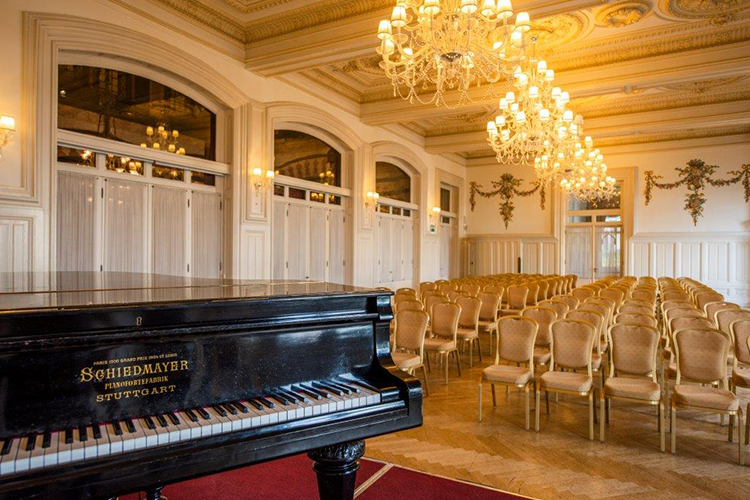Afternoon Tea Culture and History
When you think of tea, images probably come to mind of your typical everyday brew: a nice little cup of black tea with a splash of milk. But when it boils down to it, there are numerous ways that tea can be prepared, so depending where you are in the world, you’ll find that there are different cultures and customs for the way that tea is drunk. Tea is a worldwide phenomenon: Almost every country has the way to brew this versatile herb.
Since England is among the countries that do not have the opportunity to grow tea due to its climate, it takes the 17th century for England to meet tea. In the 17th century, European merchants began to bring tea from China to England. However, the Chinese sell tea only with silver and gold coins, which makes it a beverage that can only be drunk by the elite.
In the first half of the 17th century, tea was used in the treatment of diseases. Tea culture started to develop in England with the tea fashion initiated by the Queen of England in the second half of the 1700’s.Although drinking tea has become a habit in England, the people had difficulty in purchasing due to the extremely high price of tea. A group of botanists sent to China learn how to grow tea and buy their tea seedlings and start growing them in India. Thanks to Ceylon teas produced in China, UK tea started to buy cheaper.
The Emergence of Afternoon Tea
The afternoon tea ritual, initiated in the 19th century by the Duchess of England, Anna, emerges when the Duchess eats tea and sandwiches between lunch and dinner. The Duchess’s guests are also included in her habit, and after a while it becomes one of Britain’s most popular social rituals.
At the end of the 1900s, bourgeois women in the society gather in the afternoon and start drinking tea. Women attended the tea meetings, usually held between 4pm and 5pm, wearing long silk gloves and hats. As the king liked this habit, tea parties started to be held in the palace every evening.
The Rules of the Afternoon Tea Ritual
In afternoon tea, the way the tea is brewed is extremely important. While tea bags are regarded as disrespectful to guests, it is necessary to pay attention to the tricks of brewing tea. If the snacks served to the guests with tea are not finished, the guest will not be invited to the next meetings. Snacks served in afternoon tea should be chosen from among the foods that can be eaten without using a fork or spoon.
In some countries, the way of brewing tea is different;
China
Legend has it that this whole tea thing started in China around 2737 BC when Emperor Shen Nung was sitting near a Camellia sinensis bush and some leaves fell into his pot of boiling water. He liked the taste, and it didn’t take long for tea to become an essential part of Chinese culture. Not only did the cultivation of tea open China to plenty of trade opportunities, but its consumption trickled down into the finer elements of Chinese custom, paving the way for the tea ceremony.
China’s huge population and tea-drinking heritage has resulted in many variations on the typical tea ceremony, but there are certain steps that always remain the same.
The tea ceremony is referred to as gong fu, which translates to making tea with effort – and make tea with effort they certainly do….
1. An ornate clay teapot is warmed with boiling water and the leaves are added.
2. Hot (but not boiling) water is then used to rinse the leaves and is then discarded.
3. More hot water is added to the pot.
4. The teapot is intentionally filled to overflowing. Surface debris is scooped away and the lid is then replaced.
5. The tea infuses in the pot for a period of time, often as short as one minute, before being poured in a continuous motion into cups that are arranged in a semicircle.
India
Despite being one of the largest producers of tea in the world, India is relatively new to the tea-drinking scene. Other Asian countries – such as China – have spent thousands of years honing their tea craft and making those ceremonies extra special. India, however, was only introduced to tea in the 19thcentury when the British started to establish large-scale tea plantations there.
Tea (Chai) content in India; a strong black tea that is spiced with cardamom, fennel seeds, ginger cloves, and other spices. Chai is often served by street vendors and is readily available on pretty much any Indian street.
Here’s how it’s prepared:
1. The vendor will prepare a spicy mixture that contains any of the following ingredients: cardamom, cloves, cinnamon sticks, ginger root, and peppercorns. All of these ingredients have been ground down to a fine powder.
2. The mix is then placed into a saucepan of boiling water along with some strong black tea leaves for five minutes.
3. Milk is added and the mixture is boiled for a further five minutes.
4. Sugar is added for sweetness.
5. The spices and tea leaves are then strained out.
Morocco
Referred to as ‘the new gateway to Africa’, Morocco is separated from the Spanish mainland by a thin stretch of water called the Strait of Gibraltar. If it’s considered to be the entry point to the different cultures that can be found on the African continent, then it should also be considered the entry point to the different tea-drinking cultures that can be found there.
Drinking tea is an important element of Moroccan culture, with people using it as a means of showing hospitality, socialising, and relaxing. Traditional Moroccan tea is usually a blend of Chinese green tea and North African nana mint.
Here is the Moroccan tea-making process:
1. Small glasses are arranged on a tray.
2. Chinese green tea is then mixed with some mint leaves and a lump of sugar in a teapot.
3. The person making the tea will then pour hot water into the pot and allow it to infuse for several minutes.
4. They will then pour the tea into the glasses from about 30cm above the glass.
Pera Palace, which has stood for 127 years in front of the face of the most impressive sights of Istanbul, is also the place where the first tea hours are held in this beautiful city. Welcoming guests with the floating daylight from its dome, The Kubbeli Lounge hosts the traditional Afternoon Tea accompanied by pleasant piano melodies.
These articles may be interest to you:
10 Best Cafes In Istanbul To Spend A Good Time



